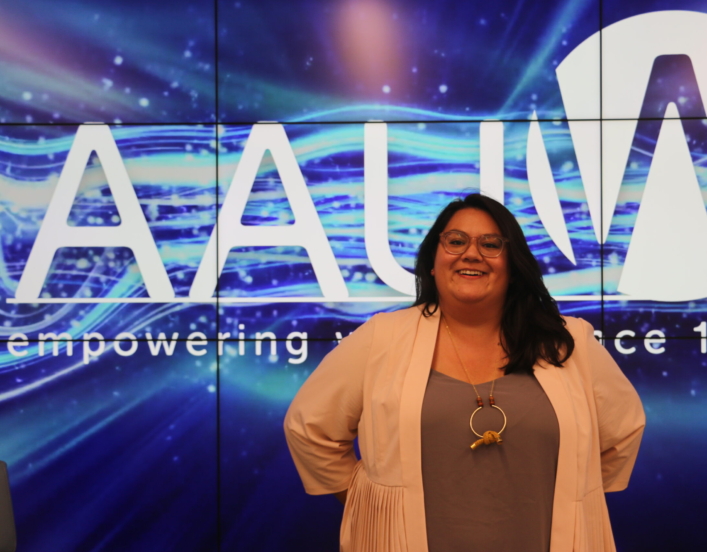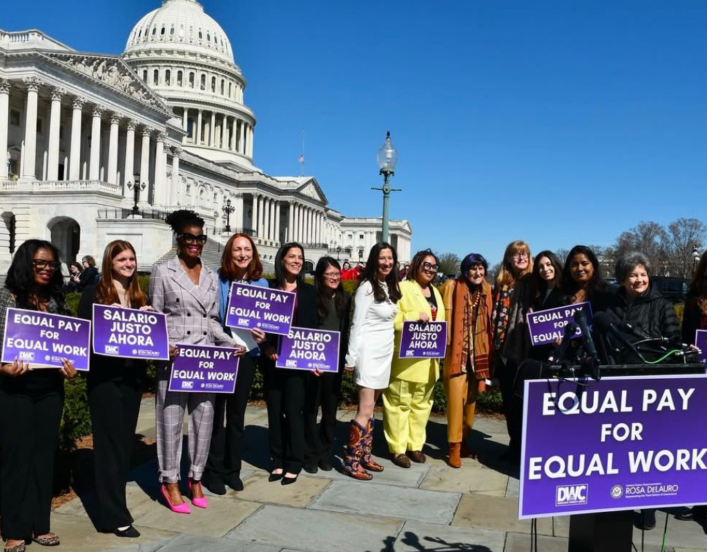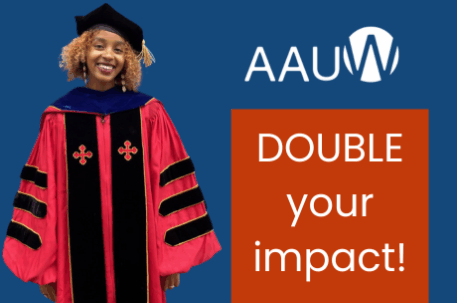Where We Stand: Human Trafficking
AAUW believes that global interdependence requires national and international policies against human trafficking and that promote peace, justice, human rights, sustainable development, and mutual security for all people.
In the past decade, human trafficking has emerged as one of the fastest-growing criminal activities in the world. This modern-day form of slavery claims an estimated 24.9 million victims of all ages around the world and is a serious violation of human rights. Although some trafficking is global, human trafficking is largely a regional and local issue with 65% of trafficking happening domestically. Traffickers use violence, debt bondage, and other forms of coercion to manipulate victims into engaging in commercial sex acts, labor services, or other forms of exploitation against their will. Traffickers particularly target marginalized or vulnerable populations, including children, undocumented migrants, and LGBTQ+ people. Though awareness and concern around this industry have grown in recent years, human trafficking is consistently underreported due to its covert nature, low community awareness, lack of law enforcement, limited resources for victim recovery, and social blaming of victims.
Sex Trafficking
Sex trafficking is the recruitment, harboring, transportation, or soliciting of a person for commercial sex acts through force or other forms of coercion. As a growing global industry, sex trafficking occurs in a wide variety of venues including residential brothels, online escort services, fraudulent massage businesses, strip clubs, and on the streets. Under federal law, any minor under the age of 18 who has engaged in commercial sex is a victim of sex trafficking—regardless of whether or not the trafficker used force, fraud, or coercion. The U.N. Office on Drugs and Crime reports that 50% of human trafficking victims were trafficked for sexual exploitation globally.
Labor Trafficking
Similar to sex trafficking, labor-trafficked victims are coerced; however, instead of being sexually exploited, victims are abused in a variety of labor settings including farms, factories, and domestic work in homes. Trafficked victims in these industries often work long hours and receive little to no pay, but are forced to work by traffickers through debt bondage, violence, or other forms of coercion. Globally, 38% of all human trafficking victims were trafficked for forced labor, and the majority of trafficked men and boys are victims of labor trafficking.
Human Trafficking Disproportionately Affects Women
Though human trafficking affects people across different backgrounds and in all areas of the world, women and girls are disproportionately impacted. Women and girls account for 71% of trafficking victims globally, and the majority are trafficked for sexual exploitation—77% of trafficked women and 72% of trafficked girls are victims of sex trafficking. Resulting from a global tendency to devalue women, women who face social and legal discrimination, poverty, or other marginalization become more vulnerable to trafficking
Human Trafficking in the United States
Contrary to popular belief, human trafficking also occurs in the United States across all 50 states and Washington, D.C. The U.S. National Human Trafficking Hotline estimates there are hundreds of thousands of human trafficking victims in the United States. In 2019 alone, the National Human Trafficking Hotline fielded 11,500 cases of human trafficking in the U.S. involving over 22,000 victims and survivors. The National Human Trafficking Resource Center found that 41% of sex trafficking cases and 20% of labor trafficking cases reported in the United States from 2007 to 2012 identified U.S. citizens as victims. Of sex trafficking cases reported in the U.S. in that same period, 85% of victims were women. In North America generally, sex trafficking is the most common form of human trafficking, with 72% of all victims on the continent being trafficked for sexual exploitation.
Current Efforts to End Human Trafficking
The main federal legislation in the United States used to combat trafficking is the Trafficking Victims Protection Act (TVPA), recently reauthorized and amended by the 115th Congress in 2019. The TVPA includes invaluable specialist services for survivors of human trafficking, grants prosecutors new tools to go after traffickers for exploiting others, and enhances partnerships with priority countries to protect children and prevent child trafficking. Additionally, the Justice for Victims of Human Trafficking Act, a bill aimed to end the demand for illegal trade and support survivors, was signed into law in 2015. The federal government has also worked to end human trafficking through the Department of Homeland Security’s Blue Campaign, which strives to bring those who exploit human lives to justice.
Even with these federal efforts, much work is still left to be done at the state level. All states should have statutes in place that address protection of victims, prosecution, and prevention. Protection must include provisions that cover safe harbor, victim assistance, civil remedies, the ability to vacate convictions for survivors, and strict hotline posting requirements.



